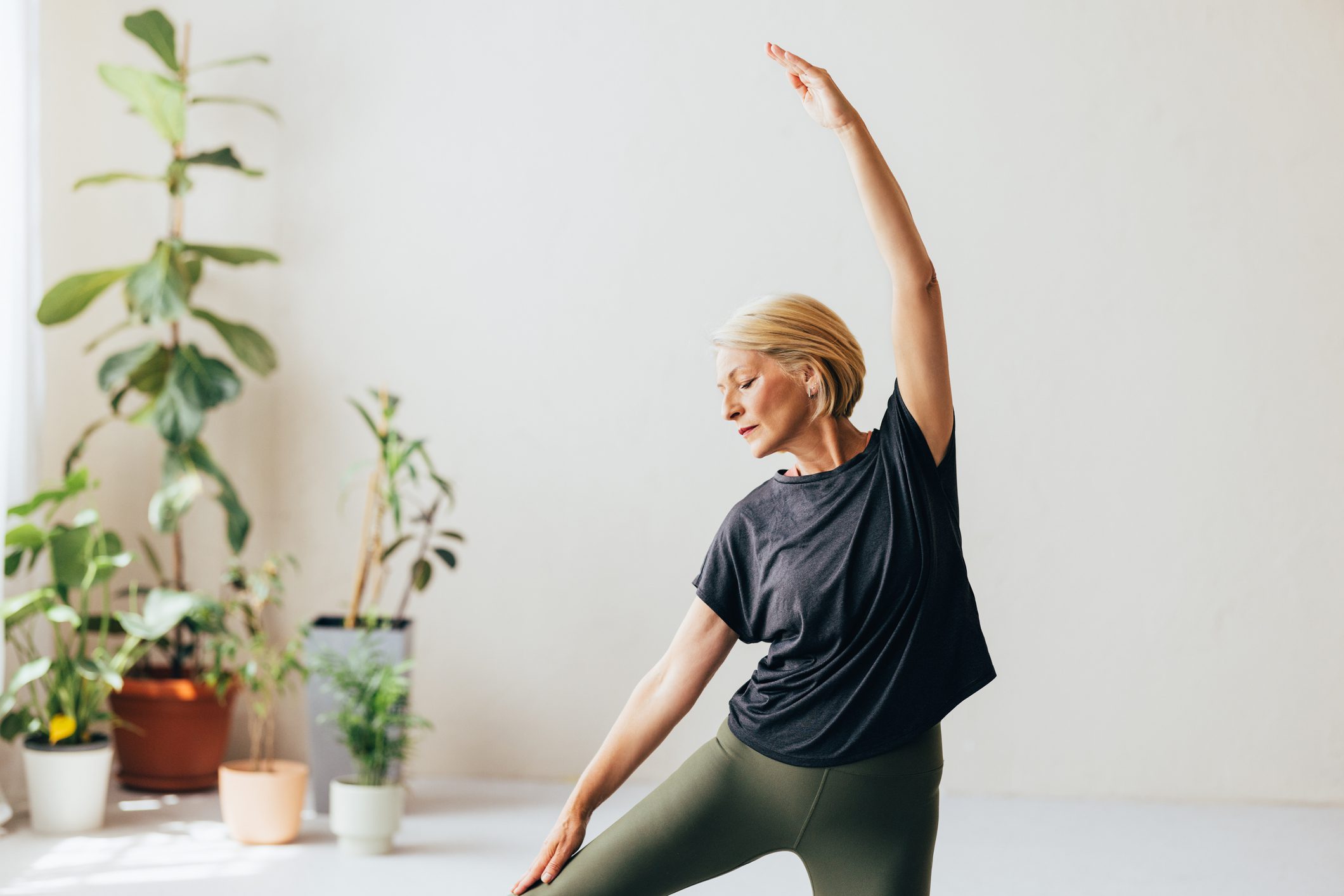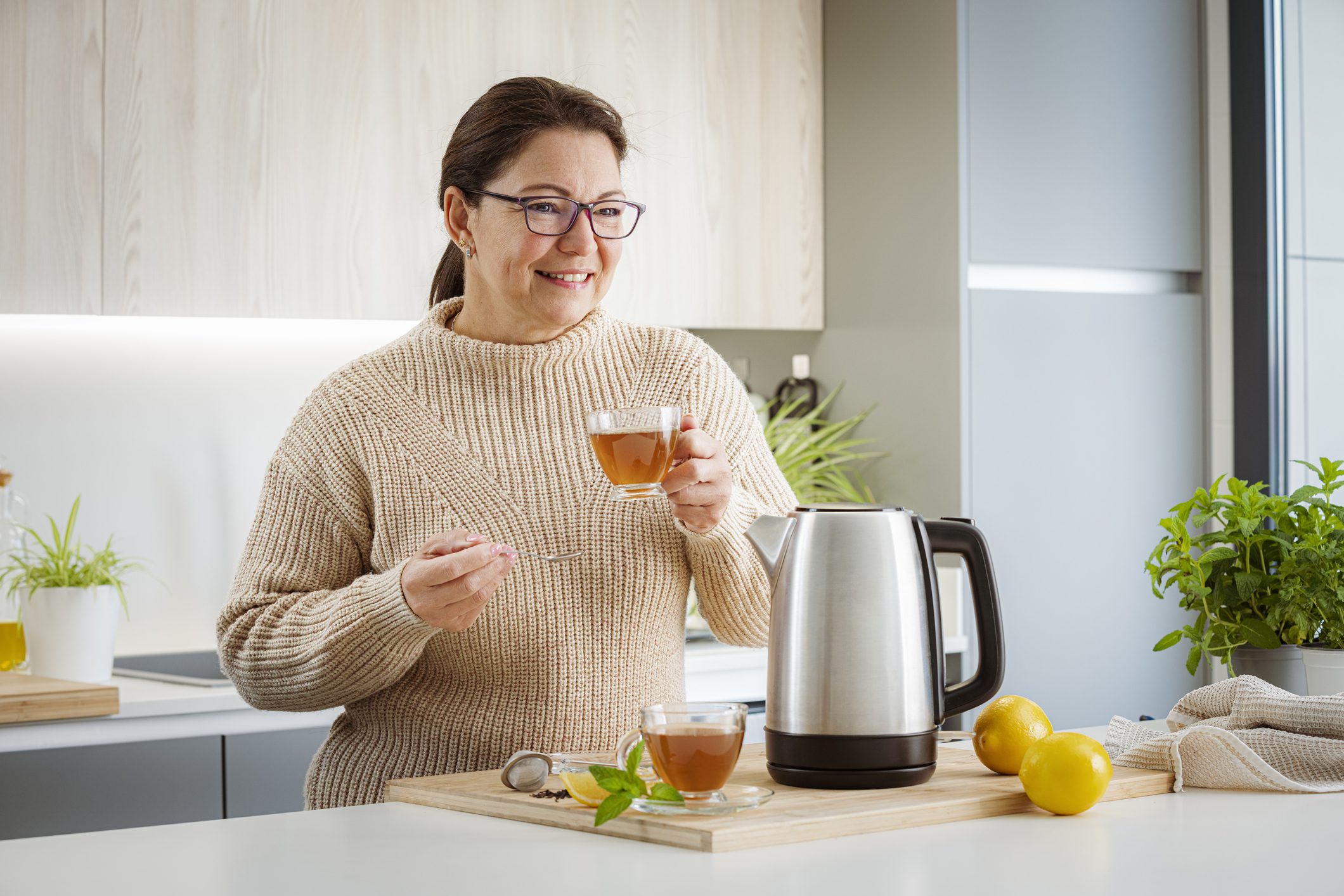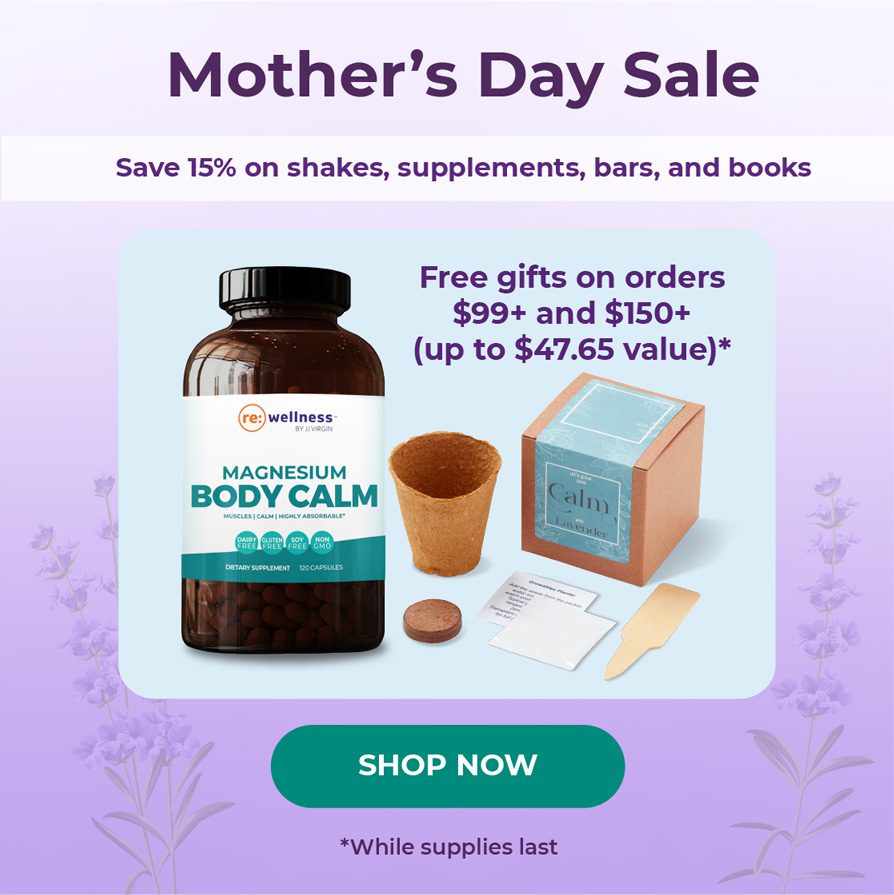Finding ways to navigate chronic pain can help you develop resilience, inner strength, and a better sense of well-being. You may also find new sources of support, personal growth, and a deeper appreciation for life's small joys as you move through this journey. These emotional challenges can be opportunities for growth and self-discovery.
One in five US adults regularly struggles with chronic pain,1 contributing to anxiety, depression, and poor sleep.2 You are not alone!
There is no one-size-fits-all approach to living with chronic pain. While avoiding exercise might be tempting, often this just makes the situation worse. Instead, find the right balance between staying active and accommodating your pain.
Chronic Pain and Fitness
Many times, healthcare experts tell people to rest and limit their activity when they have chronic pain. However, regular exercise can help manage pain intensity and improve your mood.
One review looked at 21 studies with over 37,000 participants. These studies evaluated different types of pain, including arthritis and back pain. Researchers also tested different kinds of exercises like strength training and yoga. Overall, some studies showed improvements in pain severity and physical function to improve quality of life.3
What that in mind, here are some effective ways to stay fit with chronic pain. Always work with a healthcare professional before starting any fitness program to ensure a safe, effective approach to your exercise routine.
Low-Impact Exercises
Low-impact exercises provide a safe and effective way to keep up physical activity with chronic pain. By low-impact, I'm talking about gentle activities that minimize stress on your joints, not necessarily low-intensity.
Low-impact activities can boost blood flow, decrease stiffness, and improve your flexibility. These activities also release endorphins, which act as natural pain relievers.
Here are a few ideas to try:
- Swimming is particularly beneficial if you have chronic pain in your joints. Your joints experience reduced impact thanks to the natural buoyancy of water. The ability to float in water counters the usual effects of gravity, making it a soothing and supportive exercise environment. You might also want to look into water aerobics classes; you do it in a shallow pool so it doesn’t require swimming, but you still get the gentle support of the water.
- Walking is simple and effective, and you can tailor it to your fitness level. You can do it indoors on a treadmill or outdoors in a park, adding speed and incline at your own pace.
- Riding a stationary bike or a regular bicycle is a great way to get a cardio workout without putting too much stress on your body. Good form is important; make sure you properly adjust your bike and handle height for your comfort and safety.
- An elliptical trainer provides a smooth, low-impact motion that works both your upper and lower body. It's a good choice if you’re looking to get a good cardio workout without the impact of running or jogging.
- Yoga focuses on flexibility, balance, and relaxation. You can modify many yoga poses and stretches to accommodate different fitness levels and physical limitations. You can do this at home, but you might be better off in person at first where you can talk to the instructor about your unique needs and they can offer adjustments during class.
- Tai chi is a low-impact martial art that involves slow, flowing movements. It’s a gentle practice that can help improve balance, flexibility, and overall body awareness.
- Mat pilates is a workout that emphasizes core strength, flexibility, and posture. It often uses controlled movements that can be modified for people of various fitness levels.
- Rowing machines provide a low-impact, full-body workout (again, don’t mistake low-impact for low-intensity; rowing is a hell of a workout!). The smooth, controlled motion of rowing can is great for cardiovascular fitness and strength.
- Resistance bands or light weights can help strengthen muscles without putting excessive stress on joints. Focus on proper form to avoid injury; join a resistance-training program with demonstration videos or work with a personal trainer who can show you how to do exercises the right way.
- Seated exercises are ideal for people with limited mobility. You can perform seated arm or leg lifts, seated marches, or even use resistance bands seated. A couple ways to do this:
- Sit in a sturdy chair with your feet flat on the floor and your back straight. Slowly lift one leg in front of you, keeping it as straight as possible, and hold for a few seconds. Then, lower it back down. Repeat this movement for 10-15 reps on each leg. This exercise helps strengthen the quads and can improve leg mobility.
- While seated in the chair, march in place by lifting one knee towards your chest and then the other as if you were walking in a seated position. This exercise helps improve circulation, engages the core muscles, and is a great way to increase your heart rate while remaining seated.
As you’re considering these low-impact options, look at online fitness programs or apps that offer guided workouts tailored to your needs and abilities.
A supportive community can also be helpful if you're living with chronic pain. Studies show that peer support groups can provide emotional, practical, and social benefits for pain management. They may even reduce the need for medication and some health services.4 Sharing experiences, tips, and advice with others who understand what it's like to live with chronic pain can provide a sense of belonging and reduce feelings of isolation.
Resistance Training
Resistance training is beneficial for those with chronic pain, as strong muscles support and stabilize joints, reducing pain and improving daily function. This is especially true in conditions like osteoarthritis, where studies have shown significant pain relief and enhanced functionality through tailored strength-training programs.5,6
Strength training not only alleviates pain but also enhances mobility. However, it's important to consult a healthcare professional before starting, especially if you have conditions like severe osteoporosis or certain types of inflammatory arthritis, as these may require specialized exercise approaches.
For those with high-intensity chronic pain, prioritize pain management before beginning strength training. When starting, use lighter weights or resistance bands, focusing on proper form and gradually increasing resistance to avoid overexertion. Remember, rest and recovery are as crucial as the training itself for long-term success.
Ready to start a resistance training plan? My Resistance Training Cheat Sheet provides everything you need for your fitness journey, including home gym essentials, an eight-week workout plan, and a progress tracker to track your sets, reps, and weights with each workout. I recommend working with a physical therapist or personal trainer who specializes in chronic pain to modify this plan as needed. The Cheat Sheet is FREE, so grab yours here.
Stretching and Flexibility
Stretching exercises, including yoga and tai chi, are effective for managing chronic pain. They enhance flexibility, reduce muscle tension, and improve range of motion, allowing more comfortable movement.
Regular stretching is especially beneficial for conditions like myofascial pain syndrome, fibromyalgia, and arthritis, which often involve muscle stiffness and tightness.
However, stretching may not be for everyone. If you have acute injuries, inflammation, or conditions causing joint instability, stretching could exacerbate your symptoms. It's essential to wait until you've healed adequately before attempting these exercises.
Always consult a healthcare provider or physical therapist before starting a stretching routine, particularly if your chronic pain is severe. Proper technique and form are mission-critical to prevent injury and avoid worsening existing pain.
Zone 2 Training
Zone 2 training, a moderate-intensity aerobic exercise, can be valuable to your chronic pain management toolkit. It promotes better circulation and oxygen delivery, crucial for alleviating chronic pain. During Zone 2 workouts, you maintain a sustainable, comfortable level of activity, avoiding overexertion.
Key benefits of Zone 2 training include better cardiovascular health through improved blood flow, reduced inflammation, and the release of endorphins, which are natural pain relievers that also elevate mood.
To incorporate Zone 2 training into your routine, consider exercises like brisk walking, leisurely cycling, or dancing at a moderate pace, which keep you within 60-70% of your maximum heart rate.
Consistency is key—regular sessions that fit your lifestyle and include adequate rest and recovery can lead to significant improvements in pain management and overall well-being.
Manage Chronic Pain Through Your Diet
Your food choices have a significant impact on chronic-pain management and your ability to stay fit. Eating by the plate is the ideal way to manage chronic pain. Make every meal and loaded smoothie the trifecta of healthy fats, fiber, and protein.
Optimal protein is essential for repairing and maintaining muscles, tendons, and ligaments. It provides amino acids, the building blocks for muscle growth and repair, strengthening muscles, and helping manage pain. Some amino acids, like tryptophan, influence mood and pain perception, promoting a positive outlook.7
A protein-first approach means you get 30-50 grams of protein at every meal. Don’t guess how much protein you’re getting. My Protein Cheat Sheet provides a list of foods containing 30-60 grams of protein to make it super easy, and you can download it for free.
Supplementing with creatine complements an eat-protein-first meal approach. Creatine, stored in muscles, provides rapid energy during short bursts of intense physical activity. Creatine supplements can improve muscle function and strength, benefiting joint support and reducing pain. Creatine enhances exercise capacity and delays fatigue, making regular exercise more attainable for those with chronic pain conditions.8
Staying Mentally Fit While Managing Chronic Pain
Addressing the emotional and mental aspects of chronic pain is key to developing resilience and a positive outlook. Several techniques can help you stay mentally fit while dealing with chronic pain. A few of my favorites include:
- Emotional Freedom Technique (EFT): This psychological acupressure method involves tapping specific body points while focusing on emotional or physical pain. EFT helps manage stress, anxiety, and frustration associated with chronic pain, allowing you to release negative emotions and feel more in control.
- Meditation: Practices like mindfulness meditation foster awareness and acceptance of your condition. They encourage staying present and observing physical sensations without judgment, which can lessen pain perception. Regular meditation improves pain tolerance, reduces stress, and boosts mental well-being.
- Deep Breathing: Simple deep-breathing exercises effectively manage stress and anxiety related to chronic pain. Deep, diaphragmatic breathing promotes relaxation, lowers heart rate, and eases muscle tension, aiding in the physical and emotional coping with pain. Integrating deep breathing into daily routines or stretching exercises can amplify its benefits.
Listening to Your Body
When starting a new exercise routine, initial muscle soreness is common and usually diminishes as your body adapts. Normal post-workout soreness typically appears 12-24 hours after exercise and peaks around 48 hours.9 This soreness should be a dull, achy discomfort in the muscles worked—not severe, sharp, or debilitating pain. It generally goes away within a few days. If soreness persists beyond 72 hours or is in joints or unrelated areas, consult a healthcare professional.
Severe pain, sharp sensations, or significantly impaired movement is not typical and warrants immediate medical attention. Persistent soreness beyond a week, worsening over time, or accompanied by visible swelling, redness, or warmth indicates a potential injury or underlying issue.
If exercise increases pain, stop and seek advice from a healthcare practitioner. They can help adjust your routine for comfort.
To help alleviate muscle soreness or pain, try the following techniques:
- Heat and cold packs: Apply cold packs to reduce inflammation and numb pain, especially for acute injuries like sprains. Heat packs relax muscles, increase blood flow, and are beneficial for chronic pain from muscle tension or stiffness.
- Mindfulness practices: Incorporate deep breathing, meditation, and mindfulness to manage stress and reduce pain perception. In Mindset Mastery: 20 Practices for Power and Purpose, you'll learn how to incorporate mindset-shifting moments into your daily life. Get your FREE guide here.
- Exercise journal: Keep a journal to track your exercise routines, pain levels, and progress, making adjustments as needed.
- Hydration and sleep: Make sure you’re drinking enough water and getting enough sleep to support your efforts.
Managing Chronic Pain Starts With Your Fork
Living with chronic pain brings unique challenges, but with the right approach, you can effectively manage your well-being. Do keep in mind that progress is often gradual and includes ups and downs.
Anti-inflammatory nutrients like curcumin and omega-3 fatty acids can help manage chronic pain. Work with a functional-medicine doctor to incorporate these and other nutrients for your condition. Likewise, a physical therapist can help modify a fitness plan for your condition.
With dedication, patience, and the support of a caring community, you can make significant improvements. You have the potential to reclaim your life, find joy in movement, and overcome chronic pain's limitations. It's important to stay positive and believe in your ability to make empowering strides towards a brighter future.
Food intolerance is an underlying driver for inflammation, which can contribute to chronic pain. Our 21-Day Breakthrough Food Intolerance Cleanse is a great place to start with managing pain. It’s a self-paced online program with all the tools and resources to help calm inflammation from hidden food sensitivities, lose fat, reclaim your health, and feel energized and better than ever.
You'll get 12 in-depth video lessons, weekly meal plans, shopping lists featuring delicious and balanced fat-burning recipes, a body measurement and symptoms tracker, and guides for dining out and making healthy swaps. Plus, you’ll have access to our exclusive Facebook group for additional support.*
Learn more about the 21-Day Breakthrough Food Intolerance Cleanse here.
References:
- Raffaeli W, Tenti M, Corraro A, Malafoglia V, Ilari S, Balzani E, Bonci A. Chronic Pain: What Does It Mean? A Review on the Use of the Term Chronic Pain in Clinical Practice. J Pain Res. 2021 Mar 29;14:827-835. doi: 10.2147/JPR.S303186. PMID: 33833560; PMCID: PMC8019660.
- Alhalal EA, Alhalal IA, Alaida AM, Alhweity SM, Alshojaa AY, Alfaori AT. Effects of chronic pain on sleep quality and depression: A cross-sectional study. Saudi Med J. 2021 Mar;42(3):315-323. doi: 10.15537/smj.42.3.20200768. PMID: 33632911; PMCID: PMC7989257.
- Geneen LJ, Moore RA, Clarke C, Martin D, Colvin LA, Smith BH. Physical activity and exercise for chronic pain in adults: an overview of Cochrane Reviews. Cochrane Database Syst Rev. 2017 Apr 24;4(4):CD011279. doi: 10.1002/14651858.CD011279.pub3. PMID: 28436583; PMCID: PMC5461882.
- Farr M, Brant H, Patel R, Linton MJ, Ambler N, Vyas S, Wedge H, Watkins S, Horwood J. Experiences of Patient-Led Chronic Pain Peer Support Groups After Pain Management Programs: A Qualitative Study. Pain Med. 2021 Dec 11;22(12):2884-2895. doi: 10.1093/pm/pnab189. PMID: 34180996; PMCID: PMC8665998.
- NASM: Exercising With Chronic Pain: How to Alleviate Stress on the body
- Knutzen KM, Pendergrast BA, Lindsey B, Brilla LR. The effect of high resistance weight training on reported pain in older adults. J Sports Sci Med. 2007 Dec 1;6(4):455-60. PMID: 24149478; PMCID: PMC3794485.
- PainScale: The Importance of a Protein-Rich Diet When Dealing With Chronic Pain
- Wax B, Kerksick CM, Jagim AR, Mayo JJ, Lyons BC, Kreider RB. Creatine for Exercise and Sports Performance, with Recovery Considerations for Healthy Populations. Nutrients. 2021 Jun 2;13(6):1915. doi: 10.3390/nu13061915. PMID: 34199588; PMCID: PMC8228369.
- Healthline: Delayed Onset Muscle Soreness (DOMS) – Healthline
The views in this blog by JJ Virgin should never be used as a substitute for professional medical advice. Please work with a healthcare practitioner concerning any medical problem or concern. The information here is not intended to diagnose, treat, or prevent any disease or condition. Statements contained here have not been evaluated by the Food and Drug Administration.
*These statements have not been evaluated by the Food and Drug Administration. This product is not intended to diagnose, treat, cure, or prevent any disease.






